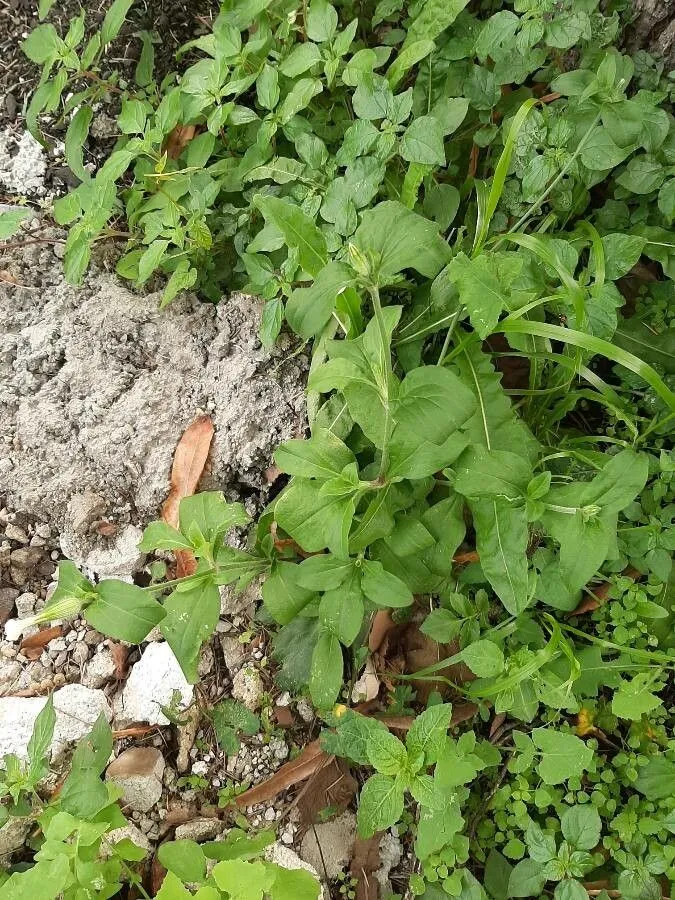
Author: L.
Bibliography: Sp. Pl.: 419 (1753)
Year: 1753
Status: accepted
Rank: species
Genus: Silene
Vegetable: False
Observations: Europe to Siberia and Iran
Night-flowering catchfly, scientifically named Silene noctiflora, is an intriguing and versatile plant species belonging to the Caryophyllaceae family. Described by the renowned botanist Carl Linnaeus in 1753, this plant holds a significant place in the world of flora for both its unique characteristics and wide geographical distribution.
Native to regions spanning from Europe to Siberia and Iran, Night-flowering catchfly has adapted to a broad range of environmental conditions, showcasing its robust nature. Known for its resilience, this species can often be found thriving in various habitats, including meadows, grasslands, and alongside cultivated fields.
One of the most remarkable features of Silene noctiflora is its nocturnal blooming pattern. As its common name suggests, the flowers open in the evening and remain open throughout the night, emitting a subtle yet captivating fragrance that attracts nocturnal pollinators such as moths. The flowers, typically white or pale pink, are delicate and star-shaped, adding an understated elegance to the plant’s overall appearance.
In terms of its physical structure, Night-flowering catchfly generally grows to a modest height, reaching up to about 50-80 centimeters. Its slender stems are often covered in fine, sticky hairs, which serve a dual purpose – deterring herbivores and ensuring that the plant’s pollen adheres effectively to visiting insects. The leaves are lance-shaped and arranged oppositely, providing a visually appealing symmetry.
Despite its beauty, Silene noctiflora is also known for its somewhat invasive tendencies in certain regions. It has the ability to disseminate widely and establish itself quickly, often outcompeting native species. This characteristic has prompted the need for careful monitoring and management in areas where it is not native.
In summary, Silene noctiflora, or Night-flowering catchfly, stands out not only for its captivating nocturnal blooms but also for its widespread adaptability. This fascinating plant continues to enchant botanists and plant enthusiasts alike, serving as a testament to the diversity and resilience of flora in our natural world.
Deu: acker-leimkraut, acker-lichtnelke, ackernelke
Dan: nat-limurt
Eng: night-flowering campion, night-flowering catchfly, nightflowering silene, sticky cockle, night-flowering silene, night-scented catchfly, night-flowered catchfly
Fra: compagnon de nuit, silène noctiflore, silène de nuit, silène à fleurs nocturnes
Nld: nachtkoekoeksbloem
Swe: nattglim
Ces: silenka no
Cym: blodyn y gwyll, gelyn y cler, gludlys nos flodeuol peraroglaidd, gludlys nos-flodeuol
En: Night-flowering catchfly, Nightflowering silene, Night-flowering campion, Sticky cockle, Night-Scented Catchfly, Night-flowered Catchfly, Night-flowering silene, Nightflowering Catchfly
Ca: Silene nocturna
Cs: Silenka no
Da: Nat-limurt
Nl: Nachtkoekoeksbloem
Fr: Silène noctiflore, Compagnon de nuit, Silène de nuit, Silène à fleurs nocturnes
De: Acker-Lichtnelke, Acker-Leimkraut, Ackernelke, Acker Lichtnelke, Echte Lichtnelke, Nachtnelke, Acker-Nachtnelke, Ackerleimkraut, Ackerlichtnelke, Ackernachtnelke, Echte Nachtnelke, Nachtblühendes Leimkraut
It: Silene aprentesi di notte, Silene che si apre di notte
Pt-br: Alfinetes-da-noite
Sv: Nattglim
Cy: Blodyn y Gwyll, Gelyn y Cler, Gludlys Nos Flodeuol Peraroglaidd, Gludlys Nos-Flodeuol
Taken Jun 30, 2022 by Radoslav Marinkovic (cc-by-sa)
Taken Jun 17, 2020 by Frozy
Taken Jul 17, 2022 by Robert Drajewicz (cc-by-sa)
Taken Mar 30, 2021 by Gonzàlez Niell Víctor (cc-by-sa)
Taken Jun 11, 2020 by Ornitho Galum (cc-by-sa)
Taken Jun 10, 2022 by GiacomO (cc-by-sa)
Taken Jun 6, 2020 by Linde Anne (cc-by-sa)
Taken May 18, 2021 by Martin Lukac (cc-by-sa)
Taken Nov 11, 2021 by De Vincentis Davide (cc-by-sa)
Taken Jun 17, 2020 by Frozy
Taken Jun 17, 2020 by Frozy
Taken Oct 7, 2021 by Pénélope Marie (cc-by-sa)
Taken Jul 5, 2021 by k.dimitrov d (cc-by-sa)
Taken Jul 10, 2022 by Алладин Хуснуллин (cc-by-sa)
Taken Nov 11, 2021 by De Vincentis Davide (cc-by-sa)
Taken Jul 15, 2012 by Photoflora – Benoit BOCK (©)
Taken Mar 9, 2021 by Lobbes Carsten (cc-by-sa)
Taken May 23, 2022 by Pierfrancesco Burrato (cc-by-sa)
Taken Sep 28, 2016 by Tela Botanica − Denis FILOSA (cc-by-sa)
Taken Jun 30, 2022 by Radoslav Marinkovic (cc-by-sa)
Taken Jun 16, 2022 by B V (cc-by-sa)
Taken Jul 3, 2021 by guinnevere lowe (cc-by-sa)
Taken Jul 15, 2012 by Photoflora – Benoit BOCK (©)
Taken Jul 15, 2012 by Photoflora – Benoit BOCK (©)
Taken Jul 15, 2012 by Photoflora – Benoit BOCK (©)
Taken Jan 1, 1970 by Photoflora – L’Abbé COSTE (©)
Taken Jul 15, 2012 by Photoflora – Benoit BOCK (©)
© copyright of the Board of Trustees of the Royal Botanic Gardens, Kew.
Growth habit: Forb/herb
Ph maximum: 8.0
Ph minimum: 7.5
Light: 7
Atmospheric humidity: 4
Bloom months: [‘jul’, ‘aug’, ‘sep’]
Soil nutriments: 6
Family: Myrtaceae Author: (F.Muell.) K.D.Hill & L.A.S.Johnson Bibliography: Telopea 6: 402 (1995) Year: 1995 Status:…
Family: Rubiaceae Author: Pierre ex A.Froehner Bibliography: Notizbl. Bot. Gart. Berlin-Dahlem 1: 237 (1897) Year:…
Family: Sapindaceae Author: Koidz. Bibliography: J. Coll. Sci. Imp. Univ. Tokyo 32(1): 38 (1911) Year:…
Family: Asteraceae Author: A.Gray Bibliography: Pacif. Railr. Rep.: 107 (1857) Year: 1857 Status: accepted Rank:…
Family: Fabaceae Author: Medik. Bibliography: Vorles. Churpfälz. Phys.-Ökon. Ges. 2: 398 (1787) Year: 1787 Status:…
Family: Aspleniaceae Author: (Cav.) Alston Bibliography: Bull. Misc. Inform. Kew 1932: 309 (1932) Year: 1932…